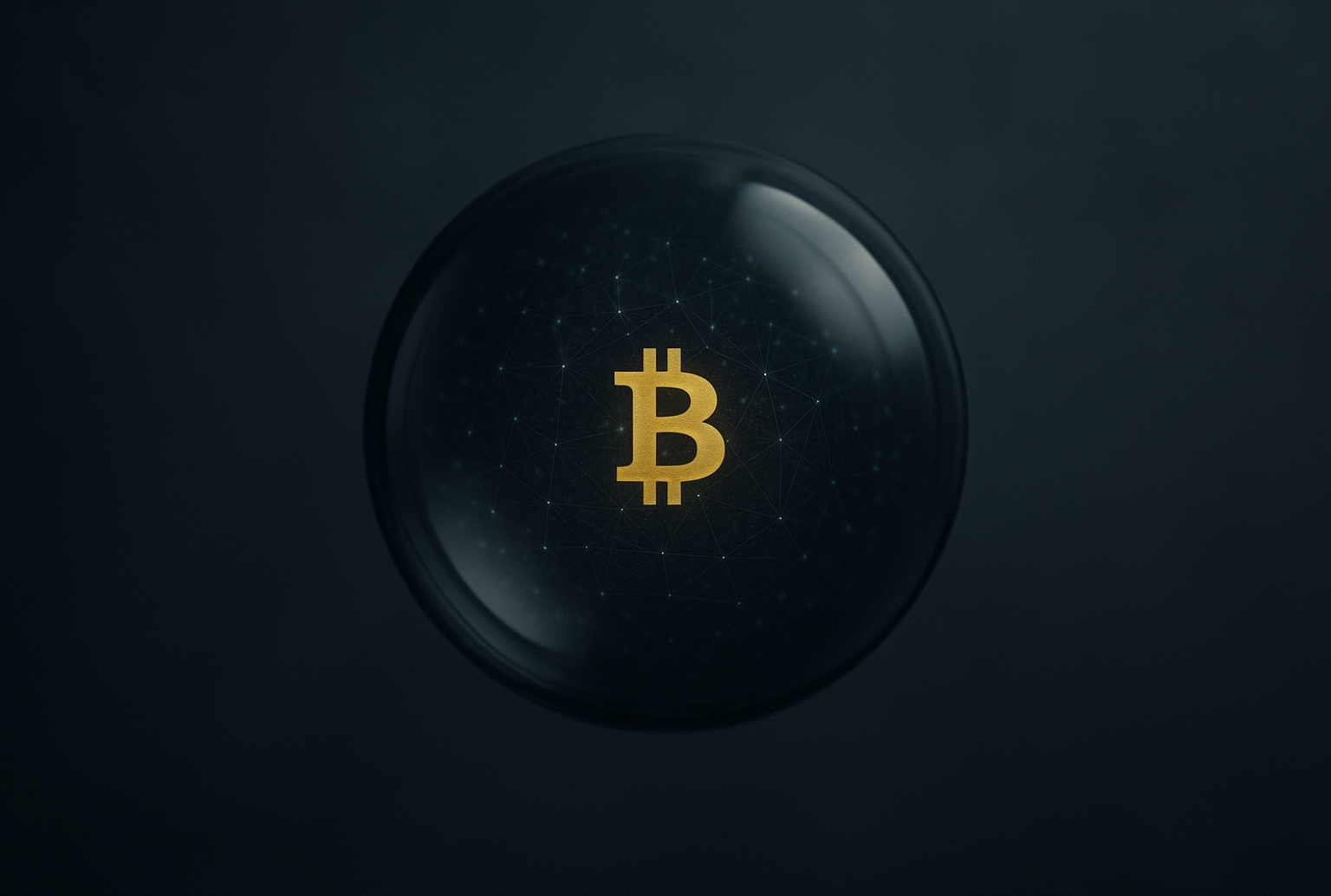Uniswap Guide: Complete Tutorial for Decentralized Exchange Trading

Uniswap is the leading decentralized exchange using automated market makers, allowing users to trade tokens directly from their wallets with no registration required, supporting thousands of token pairs.
Traditional cryptocurrency exchanges require you to create accounts, verify your identity, and trust them with your funds. Uniswap eliminates all of these barriers by enabling direct trading from your wallet using automated smart contracts.
Understanding Uniswap is essential because it pioneered the decentralized exchange model that most DeFi protocols now use. It's not just a trading platform - it's the foundation of DeFi liquidity that enables countless other protocols to function.
Uniswap's automated market maker system represents a fundamental innovation in how markets work. Instead of matching buyers and sellers through order books, it uses mathematical formulas and liquidity pools to enable continuous trading.
This guide covers everything from basic token swapping to advanced liquidity provision strategies, helping you understand both how to use Uniswap effectively and how automated market makers work.
Mastering Uniswap provides the foundation for understanding most DeFi protocols, since many use similar automated market maker principles for their core functionality.
After learning about DeFi governance tokens and protocol fundamentals, understanding Uniswap provides practical experience with the most important DeFi infrastructure.
Uniswap Overview and Evolution
Uniswap has evolved through multiple versions, each introducing significant improvements to decentralized exchange functionality.
Uniswap V1, V2, and V3 Differences
Uniswap V1 (2018): The original proof of concept that introduced automated market makers to Ethereum, supporting only ETH-to-token trading pairs.
Uniswap V2 (2020): Major upgrade enabling any ERC-20 token to be paired with any other ERC-20 token, dramatically expanding trading possibilities and launching the DeFi summer.
Uniswap V3 (2021): Revolutionary upgrade introducing concentrated liquidity, multiple fee tiers, and advanced capital efficiency features that significantly improved the trading experience.
Key Improvements: Each version improved capital efficiency, reduced trading costs, and expanded functionality while maintaining the core automated market maker principles.
Version Selection: Users can choose which version to use, with V3 generally offering better pricing for most trades due to concentrated liquidity features.
Automated Market Maker Innovation
Constant Product Formula: Uniswap V2 uses the x*y=k formula where the product of token quantities in a pool remains constant, automatically adjusting prices based on trading activity.
Price Discovery: Prices adjust automatically as traders swap tokens, with larger trades causing more price impact relative to pool size.
Liquidity Pools: Token pairs are held in smart contract pools where users can deposit tokens and earn fees from traders who use their liquidity.
Arbitrage Mechanisms: Price differences between Uniswap and other exchanges create arbitrage opportunities that help maintain accurate pricing.
No Order Books: Unlike traditional exchanges, Uniswap doesn't use order books - all trades execute against liquidity pools at algorithmically determined prices.
Total Value Locked and Volume
Market Leadership: Uniswap consistently ranks among the top DeFi protocols by total value locked and trading volume.
Liquidity Depth: Deep liquidity across thousands of token pairs enables efficient trading for both popular and niche cryptocurrencies.
Volume Growth: Daily trading volume often exceeds $1 billion, demonstrating widespread adoption and usage.
Network Effects: More liquidity attracts more traders, which attracts more liquidity providers, creating positive feedback loops.
Cross-Chain Expansion: Uniswap has expanded to multiple blockchain networks beyond Ethereum to serve users across different ecosystems.
Getting Started with Uniswap
Using Uniswap requires a compatible wallet and understanding of basic DeFi interactions.
Wallet Connection Process
Compatible Wallets: Uniswap works with MetaMask, WalletConnect, Coinbase Wallet, and most other Ethereum-compatible wallets.
Connection Steps: Visit app.uniswap.org, click "Connect Wallet," select your wallet type, and approve the connection in your wallet interface.
Network Selection: Ensure your wallet is connected to the correct network (Ethereum mainnet, Polygon, Arbitrum, etc.) for the tokens you want to trade.
Wallet Security: Never share your seed phrase or private keys with anyone, and always verify you're on the official Uniswap website.
Gas Token Requirements: Ensure you have sufficient ETH (or the native token of other networks) to pay for transaction fees.
Interface Navigation
Swap Interface: The main trading interface where you select tokens to swap and execute trades.
Pool Interface: Section for providing liquidity to trading pools and managing liquidity positions.
Vote Section: Governance interface for UNI token holders to participate in protocol decisions.
Charts and Analytics: Built-in charts and analytics for token prices and trading volume.
Settings Menu: Options for slippage tolerance, transaction deadlines, and other trading preferences.
Gas Fee Considerations
Gas Fee Basics: All Uniswap transactions require gas fees paid in ETH to compensate miners for processing transactions.
Fee Estimation: Uniswap provides gas fee estimates before transaction confirmation, helping users understand costs.
Fee Optimization: Higher gas fees result in faster transaction confirmation, while lower fees may take longer during network congestion.
Layer 2 Options: Using Uniswap on Layer 2 networks like Arbitrum or Polygon significantly reduces gas fees.
Batch Transactions: Some advanced strategies involve batching multiple actions to reduce total gas costs.
Trading on Uniswap: Step-by-Step
The basic token swapping process on Uniswap is straightforward but involves several important considerations.
Token Swapping Process
Step 1: Select Tokens: Choose the token you want to swap from and the token you want to receive, using token search or import functions.
Step 2: Enter Amount: Input the amount you want to swap, and Uniswap automatically calculates the expected output amount.
Step 3: Review Details: Check the exchange rate, price impact, and expected slippage before proceeding with the swap.
Step 4: Approve Token (if needed): First-time token usage requires approval transactions that grant Uniswap permission to access your tokens.
Step 5: Confirm Swap: Review final details and confirm the swap transaction in your wallet.
Step 6: Transaction Completion: Wait for blockchain confirmation, typically 1-3 minutes on Ethereum mainnet.
Slippage and Price Impact
Slippage Definition: The difference between expected and actual execution prices due to market movements during transaction processing.
Slippage Tolerance: User-configurable tolerance for price changes, typically set between 0.5% and 3% depending on market conditions.
Price Impact: The effect of your trade size on the token price, with larger trades relative to pool size causing more price impact.
Market Volatility: Higher volatility periods require higher slippage tolerance to ensure transactions execute successfully.
MEV Considerations: Maximal Extractable Value attacks can cause additional slippage beyond normal market movements.
Transaction Confirmation
Gas Price Selection: Choose appropriate gas prices based on urgency and network congestion levels.
Transaction Status: Monitor transaction status through your wallet or blockchain explorers like Etherscan.
Failed Transactions: Understanding why transactions might fail and how to resolve common issues.
Transaction Replacement: Advanced users can replace pending transactions with higher gas fees for faster execution.
Success Verification: Confirming that tokens were received correctly and transaction completed as expected.
Uniswap V3 Advanced Features
Uniswap V3 introduced sophisticated features that significantly improve capital efficiency and trading options.
Concentrated Liquidity Provision
Concept Overview: V3 allows liquidity providers to concentrate their capital within specific price ranges rather than across the entire price curve.
Capital Efficiency: Concentrated liquidity can provide up to 4000x more capital efficiency compared to V2 by focusing on active trading ranges.
Range Selection: Liquidity providers choose price ranges where they expect most trading to occur, earning more fees per dollar invested.
Active Management: Concentrated positions require more active management as prices move outside chosen ranges.
Out-of-Range Risk: Liquidity earns no fees when prices move outside the selected range until prices return or positions are adjusted.
Multiple Fee Tiers
Fee Structure: V3 offers multiple fee tiers (0.05%, 0.3%, 1%) for each token pair based on expected volatility and trading patterns.
Fee Selection: Traders automatically route through the most efficient fee tier, while liquidity providers choose tiers based on their strategy.
Correlation with Volatility: Lower fee tiers typically work better for stable pairs, while higher fees suit more volatile pairs.
Competition Dynamics: Liquidity providers compete within fee tiers, with concentrated liquidity earning higher returns.
Optimal Tier Selection: Choosing the right fee tier requires understanding token pair characteristics and trading patterns.
Range Order Functionality
Limit Order Alternative: Concentrated liquidity positions can function similarly to limit orders by providing liquidity just above or below current prices.
Single-Sided Liquidity: Range orders allow providing liquidity in only one token, which gets converted to the other token as prices move through the range.
Automatic Execution: Range orders execute automatically as prices move through the specified range without requiring active monitoring.
Strategy Applications: Useful for dollar-cost averaging, taking profits, or entering positions at specific price levels.
Risk Management: Range orders require careful planning since they execute automatically regardless of market conditions.
Liquidity Provision on Uniswap
Providing liquidity to Uniswap pools enables earning fees while supporting the decentralized exchange ecosystem.
Becoming a Liquidity Provider
Pool Selection: Choose token pairs based on trading volume, fee rates, your holdings, and risk tolerance for impermanent loss.
Deposit Process: Deposit equal dollar amounts of both tokens in a trading pair to receive liquidity provider (LP) tokens representing your share.
LP Token Management: LP tokens can be held for fees or used in other DeFi protocols for additional yield opportunities.
Fee Accumulation: Trading fees accumulate automatically and are realized when you withdraw your liquidity position.
Pool Shares: Your share of pool fees corresponds to your percentage of the total pool liquidity.
Impermanent Loss Considerations
Impermanent Loss Definition: The temporary loss of value compared to simply holding tokens when prices of pooled tokens diverge significantly.
Calculation Methods: Understanding how price changes affect your position value compared to holding tokens separately.
Fee Compensation: Trading fees and additional rewards should ideally exceed impermanent loss for profitable liquidity provision.
Pair Selection Strategy: Choosing pairs with correlated price movements or stable values to minimize impermanent loss exposure.
Time Horizon Planning: Longer holding periods provide more opportunity for fees to compensate for temporary impermanent loss.
Fee Earning Mechanisms
Trading Fee Distribution: Liquidity providers earn a share of trading fees proportional to their share of pool liquidity.
Fee Compounding: Fees can be compounded by adding them back to liquidity positions or using automated compounding services.
Yield Optimization: Using additional protocols to earn yield on LP tokens while maintaining exposure to trading fees.
Tax Implications: Understanding tax treatment of liquidity provision fees and impermanent loss for proper planning.
Performance Tracking: Tools and methods for tracking liquidity provision performance including fees earned and impermanent loss.
Security and Best Practices
Using Uniswap safely requires understanding potential risks and implementing appropriate security measures.
Contract Interaction Safety
Official Interface: Always use the official Uniswap interface at app.uniswap.org rather than third-party interfaces that might be malicious.
Contract Verification: Verify that you're interacting with official Uniswap contracts rather than impostor contracts.
Transaction Review: Carefully review all transaction details before signing, including token addresses and amounts.
Wallet Security: Use hardware wallets for significant amounts and keep software wallets updated with latest security patches.
Phishing Protection: Be cautious of fake Uniswap websites and always verify URLs before connecting wallets.
Token Verification Methods
Token Lists: Use verified token lists to avoid trading fake or malicious tokens that might drain your wallet.
Contract Addresses: Verify token contract addresses through official sources before trading unknown tokens.
Liquidity Analysis: Check token liquidity and trading history to avoid tokens with manipulated prices or low liquidity.
Community Research: Research tokens through official channels and community sources before significant investments.
Red Flags: Avoid tokens with suspicious characteristics like extremely high yields, anonymous teams, or recent creation dates.
MEV Protection Strategies
MEV Understanding: Maximal Extractable Value represents profits extracted by miners and bots through transaction ordering and sandwich attacks.
Slippage Settings: Use appropriate slippage settings to reduce vulnerability to sandwich attacks while ensuring transactions execute.
Private Mempools: Consider using services that submit transactions privately to reduce MEV exposure.
Timing Strategies: Avoid trading during high volatility periods when MEV attacks are more common and profitable.
Transaction Size: Smaller transactions generally face less MEV extraction than large trades that significantly impact prices.
Advanced Trading Strategies
Experienced users can implement sophisticated strategies using Uniswap's features and integrations.
Arbitrage Trading: Identifying and executing price differences between Uniswap and other exchanges for profit.
Flash Loan Integration: Using flash loans to execute complex arbitrage or liquidation strategies involving Uniswap.
Cross-DEX Routing: Using aggregators that route trades across multiple DEXs including Uniswap for optimal execution.
Automated Strategies: Implementing automated trading strategies using bots and smart contracts that interact with Uniswap.
Portfolio Rebalancing: Using Uniswap for systematic portfolio rebalancing and dollar-cost averaging strategies.
Tax Optimization: Coordinating Uniswap trades with tax planning strategies like tax-loss harvesting.
Troubleshooting Common Issues
Understanding common problems helps resolve issues quickly and avoid costly mistakes.
Transaction Failures: Common causes include insufficient gas, slippage tolerance too low, or network congestion.
High Gas Fees: Strategies for managing high gas costs including Layer 2 usage and transaction timing.
Stuck Transactions: How to handle pending transactions that don't confirm within reasonable timeframes.
Wallet Connection Issues: Resolving problems with wallet connections and network switching.
Token Approval Problems: Understanding and resolving token approval issues for new tokens.
Price Impact Warnings: Understanding when price impact warnings indicate potential problems or opportunities.
Ready to master Uniswap for decentralized trading success? Decentralized Masters teaches the proven ABN System for advanced Uniswap strategies and DeFi trading. Learn how Uniswap mastery integrates with governance token strategies and protocol fundamentals for comprehensive DeFi expertise.
Frequently Asked Questions
Can I use Uniswap on mobile?
Yes, through mobile wallets like MetaMask mobile or dedicated DeFi mobile applications.
How do I calculate impermanent loss?
Use online calculators that compare your LP position value to simply holding the underlying tokens.
Why are gas fees so high on Uniswap?
Gas fees depend on Ethereum network congestion. Consider using Uniswap on Layer 2 networks for lower fees.
Can I lose money providing liquidity?
Yes, through impermanent loss if token prices diverge significantly, though trading fees may compensate over time.
Is Uniswap safe to use?
Uniswap has strong security practices and extensive auditing, but users must be careful about fake tokens and phishing attempts.
How do I add new tokens to Uniswap?
Tokens are added automatically when liquidity is provided. You can trade any ERC-20 token by entering its contract address.
What fees does Uniswap charge?
Uniswap charges trading fees (0.05%, 0.3%, or 1% depending on the pair) that go to liquidity providers, plus Ethereum gas fees.
Do I need to create an account to use Uniswap?
No, Uniswap requires only a compatible wallet connection without any account creation or KYC requirements.




